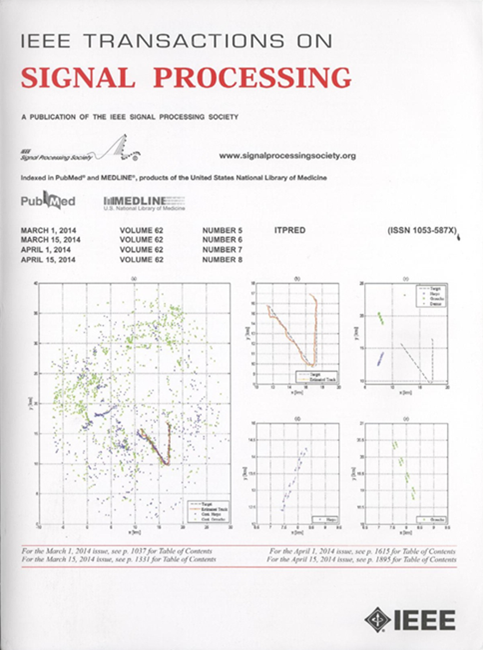多模态数据融合的个性化耦合张量分解:唯一性与算法
IF 4.6
2区 工程技术
Q1 ENGINEERING, ELECTRICAL & ELECTRONIC
引用次数: 0
摘要
耦合张量分解(CTDs)通过连接来自不同数据集的因子来实现数据融合。虽然已经提出了许多CTDs,但目前的工作并没有解决数据融合的重要挑战,其中:1)数据集通常是异构的,构成对给定现象的不同“观点”(多模态);2)每个数据集可以包含个性化或特定于数据集的信息,构成不与其他数据集耦合的不同因素。在这项工作中,我们引入了一个个性化的CTD框架来应对这些挑战。提出了一种灵活的模型,其中每个数据集表示为两个分量的和,一个通过多线性测量模型与公共张量相关,另一个特定于每个数据集。假定公共分量和不同分量都可以进行多进分解。这概括了几种现有的CTD模型。我们为分解的特定唯一性和一般唯一性提供了易于解释的条件。这些条件利用了不同个体数据集和测量模型属性的单模唯一性。提出了两种计算共同分量和不同分量的算法:半代数法和坐标下降优化法。实验结果表明,与现有的方法相比,所提出的框架具有优势。本文章由计算机程序翻译,如有差异,请以英文原文为准。
Personalized Coupled Tensor Decomposition for Multimodal Data Fusion: Uniqueness and Algorithms
Coupled tensor decompositions (CTDs) perform data fusion by linking factors from different datasets. Although many CTDs have been already proposed, current works do not address important challenges of data fusion, where: 1) the datasets are often heterogeneous, constituting different “views” of a given phenomena (multimodality); and 2) each dataset can contain
personalized
or dataset-specific information, constituting distinct factors that are not coupled with other datasets. In this work, we introduce a personalized CTD framework tackling these challenges. A flexible model is proposed where each dataset is represented as the sum of two components, one related to a common tensor through a multilinear measurement model, and another specific to each dataset. Both the common and distinct components are assumed to admit a polyadic decomposition. This generalizes several existing CTD models. We provide conditions for specific and generic uniqueness of the decomposition that are easy to interpret. These conditions employ
uni-mode
uniqueness of different individual datasets and properties of the measurement model. Two algorithms are proposed to compute the common and distinct components: a semi-algebraic one and a coordinate-descent optimization method. Experimental results illustrate the advantage of the proposed framework compared with the state of the art approaches.
求助全文
通过发布文献求助,成功后即可免费获取论文全文。
去求助
来源期刊

IEEE Transactions on Signal Processing
工程技术-工程:电子与电气
CiteScore
11.20
自引率
9.30%
发文量
310
审稿时长
3.0 months
期刊介绍:
The IEEE Transactions on Signal Processing covers novel theory, algorithms, performance analyses and applications of techniques for the processing, understanding, learning, retrieval, mining, and extraction of information from signals. The term “signal” includes, among others, audio, video, speech, image, communication, geophysical, sonar, radar, medical and musical signals. Examples of topics of interest include, but are not limited to, information processing and the theory and application of filtering, coding, transmitting, estimating, detecting, analyzing, recognizing, synthesizing, recording, and reproducing signals.
 求助内容:
求助内容: 应助结果提醒方式:
应助结果提醒方式:


